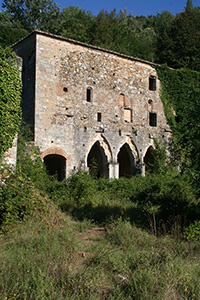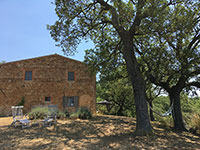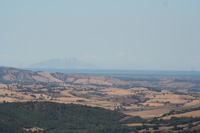Sovicille, Panorama [1]
|
|
Sovicille |
Sovicille is a comune (municipality) in the Province of Siena in the Italian region Tuscany, located about 60 kilometres (37 mi) south of Florence and about 10 kilometres (6 mi) southwest of Siena. Sovicille borders the comuni of Casole d'Elsa, Chiusdino, Monteriggioni, Monteroni d'Arbia, Monticiano, Murlo, Siena. Frazioni or fractions are Rosia, San Rocco a Pilli, Stigliano, Torri and Volte Basse. History The name Sovicille is documented as far back as 1004,[2] but the origins of the place probably go back much further. (In 2002 a mosaic from the Roman period was uncovered in the Church of St John the Baptist, and there is no shortage of Etruscan relics in the immediate area.) During the Middle Ages the region found itself on the borders between Siena and Volterra: The Abbey of Serena, some 30 kilometers to the west, was under the control of Volterra, and the land around Sovicille was included as property of the abbey around the year 1000. A written record of the place survives from 23 April 1123, in which the (by origin Senese) Pope Alexander III identifies it as Sufficille. The name is thought to derive from the Latin words "sub" (under) and "ficinulae/ficus" (small fig tree"). The municipal statutes date right back to the thirteenth century. In the thirteenth century the by now democratically administered Republic of Siena allowed several municipalities, including Sovicille, their own municipal statutes in 1238 (modified in 1293 and then reconfigured, to the format that survives today, in 1303),[3] which included the right to make their own laws. In 1260 Sovicille was occupied by Florence, but in that year the Florentine armies were defeated at the Battle of Montaperti, whereupon Sovicille reverted to Siena. In 1333 Sovicille was overrun and burned down by Pisa. The Medici family purchased the lands of Siena from the Emperor for two million ducats in 1557: this was followed by the abolition of democratic institutions and a return to feudalism. Sovicille became a fief of the Medici and was transformed into an imposing fortress, defending an access point to their newly expanded territories. After the death of the last of the Medici rulers, power transferred to the Dukes of Lorraine who remained in control till the end of the eighteenth century when the entire region was invaded by Napoleon Bonaparte. The French remained in charge till 1814 when, under the terms agreed at Vienna, Sovicille was annexed to the Grand Duchy of Tuscany. In 1859 it came under the control of the short-lived United Provinces of Central Italy, which was effectively a transitional entity leading to incorporation in 1861 within the new Kingdom of Italy.
|
||
Offizielle Webseite der Gemeinde Sovicille | Comune Sovicille |
|
|
Karte Sovicille | Ingrandire mappa
|
||||
Frazioni Sovicille: Rosia, San Rocco a Pilli, Stigliano, Torri and Volte Basse are of Sovicille.
|
||||
Sovicille Sehenswürdigkeiten |
||||
Offizielle Webseite der Gemeinde Sovicille | Comune Sovicille |
|
|||
 |
||||
Pieve san Giovanni Battista a Ponte allo Spino, Kirche im Ortsteil Ponte allo Spino, entstand am Anfang des 17. Jahrhunderts auf Willen des späteren Papstes Alexander VII |
||||
|
||||
 |
 |
 |
||
I sentieri della Montagnola senese
|
Sovicille, Pieve di San Giovanni Battista a Ponte allo Spino | Trekking in the Montagnola Senese
|
||
 |
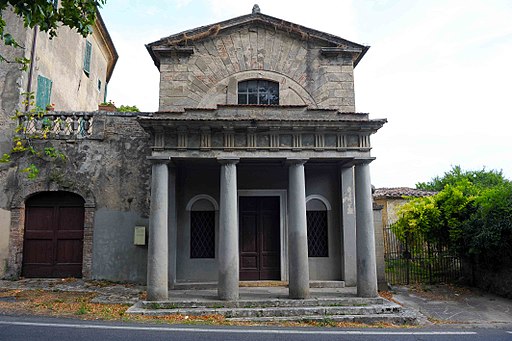 |
|||
Villa Celsa
|
Palazzo al Piano, Territory of Sovicille, Montagnola Senese
|
Cappella della fattoria di Malignano (Sovicille) | ||
 |
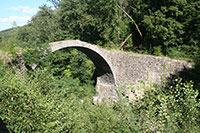 Il Ponte della Pia |
 |
||
Pieve di San Giovanni Battista a Pernina, Sovicille
|
|
CAI 100, Eremo di Santa Lucia (Rosia) | ||
 |
 |
 |
||
| Villa Cetinale | Parco Villa Cetinale
|
Villa Cetinale, Sovicille, vista dalla Scala Santa
|
||
Anello Sovicille | Sovicille - San Giusto - Villa Cetinale - Il romitorio di Cetinale -Pieve di Pernina - Villa Celsa - Ancaiano - Canonica Trecciano Anello Sovicille – Villa Cetinale – Pieve di Pernina – Molli | 17 km Sovicille - Pieve a Molli - Montarrenti - Ponte della Pia | 13 km
|
||||
|
||||
Podere Santa Pia |
Podere Santa Pia |
La Maremma e Isola Montecristo |
||
| Ferienhaus, ideal für die Familie oder zwei Ehepaare mit Kindern in einer typischen Toskana-Landschaft. | ||||
|
||||
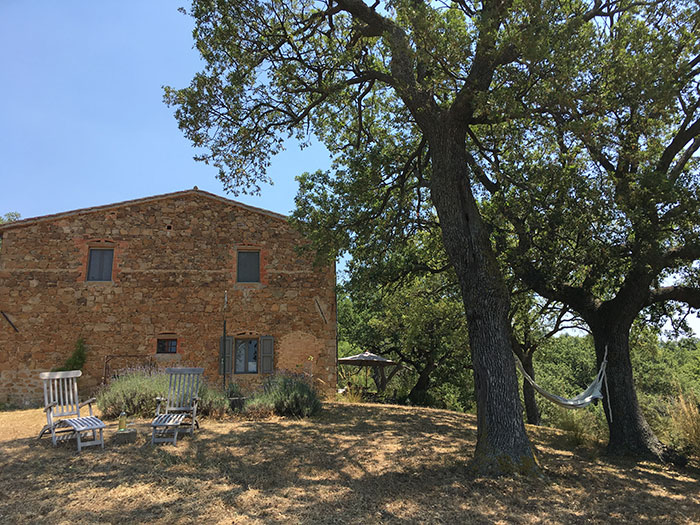 |
||||
Podere Santa Pia |
||||
[1] Photo byLigaDue. Diese Datei ist unter der Creative-Commons-Lizenz „Namensnennung 3.0 nicht portiert“ lizenziert. [2] Luigi Lanzi (1828). The History of Painting in Italy: From the Period of the Revival of the Fine Arts to the End of the Eighteenth Century. W. Simpkin and R. Marshall. pp. 450.
|
||||
Questo articolo è basato sull'articolo Sovicille dell' enciclopedia Wikipedia ed è rilasciato sotto i termini della GNU Free Documentation License.
|
||||
